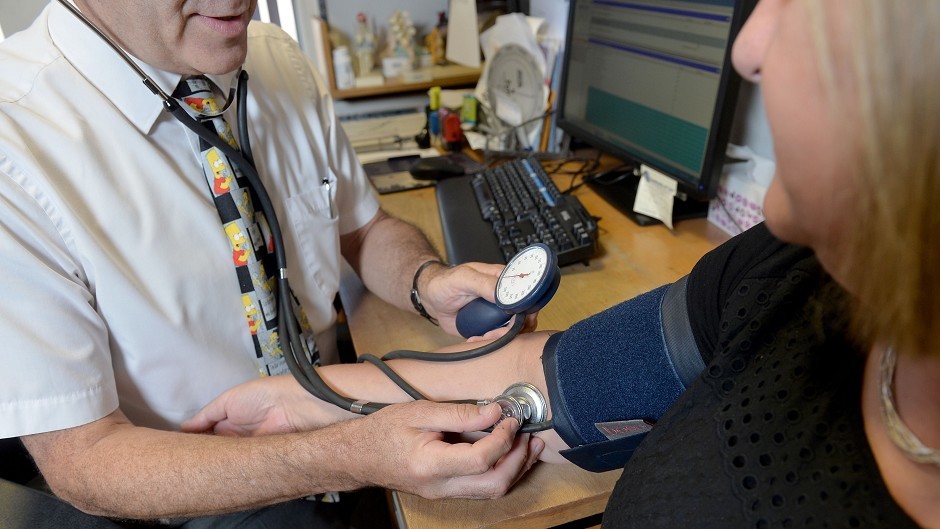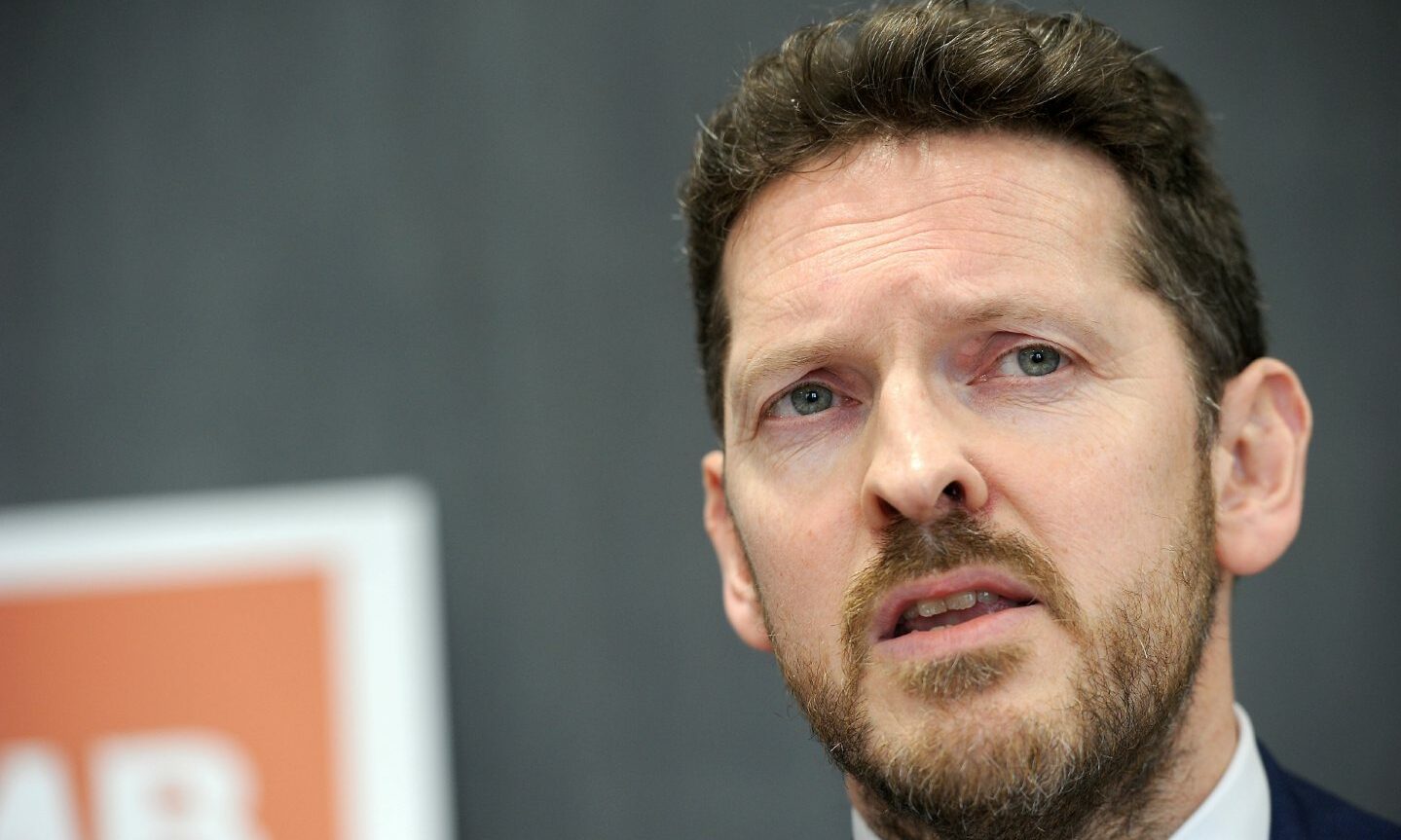
Most people grew accustomed to the reality of “virtual” GP appointments during the worst days of the Covid pandemic.
It didn’t make sense for patients with a variety of ailments to congregate in medical surgeries in large numbers when there was so much illness and infection causing distress, damage and death across Britain and the rest of the world.
But, as new research from Age Scotland has revealed, the vast majority of older people would prefer to see their GPs on a face-to-face basis rather than any remote system.
It needs an ‘honest’ debate
The charity’s Big Survey, conducted with Scotinform and containing the views of more than 4,100 over-50s, found that an in-person appointment was the preference of 82% of respondents, while only 1% were happier with a video consultation.
Yet, as the Press & Journal discovered, there is no prospect of the situation changing to suit their needs or tackle the backlog. On the contrary, the BMA in Scotland told us there is very real concern over the ability of the NHS to survive in its current form and argued that it’s essential to have an “honest and open” debate with the government to “put the NHS on a sustainable footing for the longer term.”
In other words, they believe strongly that the Scottish Government needs to arrange its own appointment with those at the sharp end of a rising malaise.
The BMA’s chairman, Invernessian Dr Iain Kennedy, spelled out the scale of the problem when he said: “Scotland is stuck in a doctor recruitment and retention crisis that is being felt acutely in many parts, not least the north and north east.”
He added: “With demand spiralling, doctors are struggling to cope. In our recent survey, 76% of them indicated they are worried there aren’t enough doctors to meet patient demand in the longer term and ahead of next winter.
“We have to accept that, in light of doctor shortages, access to your GP, or hospital appointments can be challenging, but is absolutely not down to individual doctors or practices who are working incredibly hard to deliver the best possible care for patients.
This is affecting the health of patients
“The majority of doctors across Scotland also prefer seeing patients face to face as this provides higher quality care, and more equitable care.
“There is evidence that remote consulting is widening health inequalities and that continuity of care from seeing the same doctor face to face leads to better outcomes for patients. We are clear that medical workforce planning must reflect these factors.”
However, Dr Kennedy is unconvinced there is any coherent national plan to address the myriad issues and has called for urgent talks to resolve that situation.
He said: “The key point is to ensure there is appropriate resourcing to be able to meet patients’ needs – that is beyond doctors’ control and is not in place at the moment.
‘We have to talk about the NHS’
“We need a proper workforce plan, which forecasts demand and the doctors needed to meet that demand, and we need one urgently.”
Dr Kennedy went on to say: “We also need to get on with the National Conversation on the future of healthcare in Scotland which has been promised by the Scottish Government and finally have that honest and open debate as a country about how we put our NHS on a sustainable footing for the longer term – and the resources required to do so.”
The arrival of winter across the north in the last week has cast a light on the difficulties which can be caused for those who are young and healthy. So it’s not hard to imagine the consequences of being housebound for those who are elderly with illness.
North-east Conservative MSP Liam Kerr told me: “Snow and ice have left many of us facing real difficulties getting out and about this week, with the prospect of more to come. So it’s natural to think about our neighbours, older members of the family and vulnerable people who might need a bit more support than usual.
“People, in general, come to depend on frontline services more in winter than any other time of the year. The cold also brings its own problems with flu, infections and other ailments which can become life-threatening.
Some things can’t be sorted by phone
“Our GPs and practice staff are under pressure throughout the year as it is, because there aren’t enough bodies to see those who need appointments. Some things can be dealt with over the phone, but that’s plainly not going to be ideal at the diagnosis stage.
“I have raised the issue of GP recruitment and practice closures many times at Holyrood since 2016. But there has never been an effective response from whichever health secretary has been in post, because numbers [of doctors] are dropping and [waiting] lists are getting longer and longer.
“We are often told that GPs can go to work where they want – but I believe more should be done by the Scottish government to make the north east an attractive starting post for new doctors. Because it genuinely is a brilliant place to live and work.”
But the dearth of young doctors emerging to replace those who are retiring, many only in their mid-to-late 50s, won’t be transformed overnight, even if Age Scotland is right to stress that in-person meetings with GPs offer a quite literal lifeline service.
Chief executive Katherine Crawford said: “While video and phone consultations are a valuable offering for many patients, it’s important to remember that a huge number of older people in Scotland cannot or do not want to access the internet.
“Many may also face communications barriers and find it difficult to explain their medical concerns without examination. It’s clear that a large-scale shift towards digital by default appointments is not the answer to patients’ needs.
In-person meetings are so important
“In-person appointments can be hugely important for older people, particularly those who live alone and may not see others on a regular basis, as GPs can often pick up on a range of factors about their wellbeing that they might not have noticed themselves.
“This can be instrumental in spotting potential health concerns before they become more serious, such as signs of malnourishment, problems with mobility and [a wide range of] mental health issues.
“GPs work tirelessly to cope with the immense demand, but expanding in-person appointments to more people who need or prefer them could improve patients’ health.”
In plain terms, though, there aren’t sufficient GPs to paper over the cracks. As Dr Kennedy said: “We haven’t recruited enough doctors across Scotland.
“And, when we have a shortage of doctors, rural areas and deprived areas are the first places to be affected.”
The latest NHS Scotland data shows that 42% of GP surgeries had vacancies across the country, but that figure rises significantly to 67% in the Western Isles, 64% in Grampian, 57% in Orkney and 56% in Shetland.
However, the Scottish Government insisted it was acting to improve matters.
A spokeswoman told the Press & Journal: “Scotland has a higher number of GPs per head of population than the rest of the UK, and a record high number of medical and dental consultants working in our NHS – up 67.6% since September 2006.
“The number of medical undergraduate places has increased by 67% since 2016, to a record high of 1,417, and we have recruited additional GPs and multi-disciplinary team staff in primary care settings. More junior doctor training posts are filled at this stage of the recruitment year than any other on record.
More face-to-face appointments
“We have worked with Health Boards and the profession to increase availability of face-to-face appointments. The latest data published by Public Health Scotland demonstrates a continuing rise in the proportion of face-to-face appointments delivered by GPs, 72.7% in October 2023, compared to 55.6% in October 2020.”
But the latter figure, of course, was in the midst of a pandemic with no sign of a vaccine.



